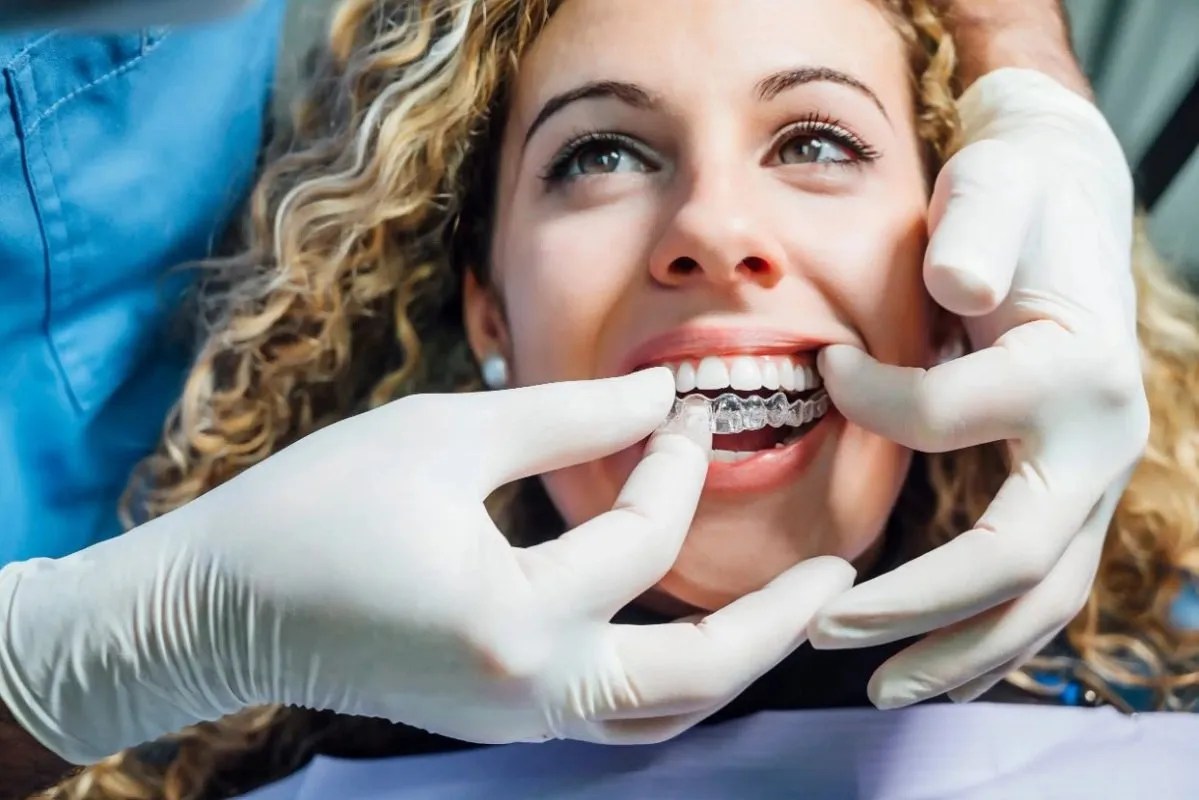
Clear aligners have revolutionized the field of orthodontics, offering a discreet and convenient alternative to traditional braces. As this treatment option gains popularity, many people have questions about how they work, their effectiveness, and what to expect during treatment.
How Do Clear Aligners Work?
Clear aligners are custom-made, removable trays that fit snugly over your teeth. They work by applying gentle, constant pressure to gradually move your teeth into the desired position. Treatment typically involves wearing a series of aligners, each slightly different from the last, to progressively straighten your teeth.
The process begins with a digital scan or impression of your teeth, which is used to create a personalized treatment plan. This plan maps out the movement of your teeth from their current position to the final, desired alignment. Based on this plan, a series of aligners is created.
Who Is A Good Candidate For Clear Aligners?
Clear aligners are suitable for many people seeking to improve their smile, but they’re not the best option for everyone. They work well for mild to moderate orthodontic issues, including crooked teeth, gaps between teeth, and minor bite problems. Adults and teenagers with fully developed mouths are often good candidates.
However, more complex orthodontic issues, such as severe overbites or underbites, rotated teeth, or significant crowding, may require traditional braces or other treatments. A consultation with an orthodontist or dentist experienced in clear aligner therapy can help determine if this treatment is right for you.
How Long Does Treatment Take?
The duration of clear aligner treatment varies depending on the individual case. Factors that influence treatment time include the complexity of the orthodontic issues being addressed and how consistently the aligners are worn. On average, treatment can take anywhere from 6 to 18 months.
Are They Comfortable?
One of the most common questions about clear aligners concerns their comfort level. Generally, clear aligners are considered more comfortable than traditional braces. Unlike braces, they don’t have wires or brackets that can irritate the inside of your mouth.
Many patients find that the smooth plastic of clear aligners is gentler on their cheeks and gums compared to the metal components of traditional braces. Additionally, the ability to remove the aligners for eating and cleaning your teeth can contribute to overall comfort during treatment. Aligner32 has a range of options to suit every need. Talk to their team about how they can help.
How Do I Care For My Aligners?
Proper care of your clear aligners is essential for maintaining their clarity and effectiveness. Rinse your aligners every time you remove them to prevent dry saliva and plaque from building up. Clean them gently with a soft toothbrush and lukewarm water. Avoid using hot water, as it can warp the plastic.
It’s important to brush and floss your teeth before reinserting your aligners to prevent trapping food particles and bacteria against your teeth. When not in use, store your aligners in their case to protect them from damage and bacteria.
What Happens After Treatment?
After completing your clear aligner treatment, it’s crucial to maintain your new smile. Most orthodontic treatments, including clear aligners, require the use of retainers to prevent teeth from shifting back to their original positions. Your orthodontist will likely recommend wearing retainers full-time initially, then transitioning to nighttime wear for long-term maintenance.

